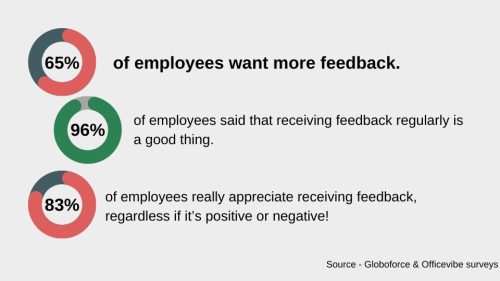How to deal with an underperforming team member

Working out how to deal with an underperforming team member and then taking the right action is one of the bigger personal challenges any manager or leader faces at work. I never liked dealing with underperformers, yet I knew that procrastinating and doing nothing was the worse option.
I also learned that when dealing with underperformers as a manager, you are very much on your own. It is you that has to assess the situation, have the difficult conversations, decide on the action that needs to be taken and put in the time to deal with the situation. Your manager, HR and official procedures usually offer limited support at best.
I would like to take you through the approach I used – successfully – time and time again in over 25 years of managing teams. There are six main steps or actions to take.
And towards the end of the article, I share an example of improvement plans I have successfully used in the past to show you how to document and monitor progress.
How to Deal With an Underperforming Team Member:
- Don’t ignore the problem
- Talk to the underperformer & find out the reason they are underperforming
- Agree on expectations and a plan of action with the underperformer
- Coach and mentor them
- Give honest feedback and monitor progress
- Take formal action if there is no improvement
Watch on YouTube
Listen on Podcast
Don’t ignore the problem – the first action in How to deal with an underperforming team member
By ignoring under performance, you are effectively signalling through your actions – to the individual and the whole team – that it is okay to underperform. You are saying underperform and nothing is going to happen. If anything, the performance of the individual is likely to get worse not better.
As you can imagine, this impacts the performance of other team members and quickly the team overall. Then your manager is going to start asking questions about your ability to manage teams. The business will certainly be worse off. This is the worst result for everyone.
Your annoyance, anger and stress levels are going to rise the longer you put off dealing with a poor performer at work. So don’t ignore the problem. As a manager you must deal with an underperforming team member to resolve the underperformance.

Talk to the Underperformer and find out the reason for the underperformance (Second Action)
Talk to the individual earlier rather than later.
Firstly, set out the issues you are having with their performance, the reasons why this is an issue for you, the team or business and provide specific examples. Do not talk in general terms, be specific and use examples.
Give them a chance to respond.
Find out why they are under performing – there can a lot of reasons why. Until you speak to them and ask them you will only be guessing. I am still surprised by what comes out of these conversations. Be supportive, care and most important – actively listen to what they say. Ask what the problem is and then stop talking. It is harder than it sounds – particularly if the silence stretches into two or three minutes.
When you know what the problems are, then you are in a much better place to help that individual. Some common reasons for underperformance include:
- Boredom or lack of challenge or lack of development
- Not being capable enough to actually do the job
- They lack vital skills or knowledge
- They have a poor attitude
- There is a big mismatch or gap between your and their expectations
- They might have personal issues outside work
- They may be having problems with you their manager – or other staff members
- They may lack vital resources to do their role properly
Speak to the individual about their performance, be specific and use examples, then find out why they are not performing or delivering in their role.
Once you understand why they are underperforming the third action in how to deal with an underperforming team member:
Agree on expectations and a plan of action with the underperformer
Tell the individual what you think and tell them what you want i.e. set out your expectations. Then get them to tell you what they think, and what they think are reasonable expectations. Expect to compromise on your expectations. You aim is to get to a set of expectations that both parties accept.
Getting their input and compromising takes more time than just setting out your expectations. The benefit you get is the other person has inputted into the expectations, been listened to and you have compromised – all of which means they are a lot more likely to agree with and own the expectations and thus be more motivated to achieve them.
Next set measurable goals together.
Once you have agreed the goals to be reached or what good looks like, discuss how they are going to get from where they are now to meeting and beating those goals. Get the individual to provide input and ideas as to how to they are going to improve their performance and what help they need.
The output you need is a joint plan with specific expectations and goals, and these are captured in a written document that you can both refer to. Make sure the goals are SMART as much as possible. Neither of you want to be in any doubt when the goals have been reached.
I usually use a 3 month timeframe for the initial plan which gives enough time for the underperformer to improve performance and is short enough so you can take alternative action if the underperformer doesn’t put in the effort.
It is useful to build in milestones into the plan where possible so there are a series of mini goals to reach on the way to achieving the main goal.
Make sure that the under-performer has inputted into and agrees with the plan and goals you. Ideally, you need them to willingly accept both.
Coach and mentor them – the fourth action in how to deal with an underperforming team member
I think actively helping the individual to improve is a vital step. By providing your time and support, your actions are demonstrating that you want them to succeed and improve their performance.
You have to give them the tools to enable them to improve their performance. Provide them knowledge, the benefit of your experience and coach them to improve their skills.
I have found that this increases their motivation and their effort levels and with this, their chances of success also increase. Coaching and mentoring is a great way to pass on your knowledge and help the underperformer develop their skills.
Of course this doesn’t always work. You can only coach or mentor a person effectively that accepts there is a problem and wants to improve their performance. If the person doesn’t want to improve, then whatever you do will have limited impact on their performance.
If you want to significantly increase the chances that the employee will improve their underperformance, then invest a good amount of time in coaching and mentoring them.
You could also assign another team member to help them or individuals from other teams. Be conscious of maintaining confidentiality of the situation.
Give honest feedback and monitor progress – fifth action in how to deal with an underperforming employee
I recommend that you provide lots of open and honest feedback to the individual. Without specific feedback, they are not going to know what they are doing well and what still needs to be improved. Leaving them guessing is not fair to them and it does not help improve their performance.
When giving feedback, do your best to make it
- Open and honest
- The feedback is a specific and detailed as possible. Use lots of examples.
- Give feedback with their development in mind
- Don’t delay giving feedback because you want them to improve as quickly as possible.
If your joint improvement plan is being run over 3 months, then I would recommend that each month you have a formal meeting and share a written document which summarises their progress. Allow them to make additions to this document if they feel what you have written does not cover all aspects of their progress.

As a manager, it is vital that you monitor progress and measure the performance improvement in some way. Then you can discuss facts and data with the underperformer rather than just your opinion against their opinion. Facts and data are much less subjective and a lot fairer, plus it is clear how much individual has improved or not.
Some examples ideas of measurement include:
- Tracking Sales generated against targets
- Cost savings gained against targets
- Activities performed to an improved timeframe or quality level
- Projects completed to agreed parameters
- Scored feedback from colleagues, customers, or suppliers
It is really hard to make all parts of the improvement plan measurable via data. When relying on opinion, try to gather several opinions rather than just putting forward your own. This adds more weight to the feedback and is fairer.
In most cases you will see plenty of improvements as the individual works through their plan. Make sure you give praise and encouragement for these improvements. This is super important if you want to keep their improvement on track and their motivation high. Capture these improvements in your written document too.
There may be occasions when the improvements are so significant that a reward is appropriate. Examples include a bottle of champagne, a public mention in the next team meeting, an achievement award etc. Use your imagination.
Give honest useful feedback throughout the period of support. Be as specific as possible. Feedback on what is going well and what is not and use data to provide a factual progress assessment where possible.
Take formal action if there is no improvement – final step in how to deal with an underperforming employee
If you are seeing no signs of improvement or not enough improvement, then take more formal action to deal with the underperforming employee. Even if you are part way through the plan, this may be a sensible step.
The work you put in to agree and document the plan and your monitoring of progress or lack of it can be used as part of a disciplinary process. Involve HR and move all the actions you take to a more formal footing.
It is painful to remove someone from the business – for them, for you, your team, and the business. If the person is underperforming and not happy, they are likely to be better off in a different job and different environment. Make the difficult choices and take action.
Moving an underperforming employee who doesn’t want to improve to another team or department may seem like an easier option, but it will not be easier for the business overall. The problem will remain and someone else will have to deal with it. Passing the buck is likely to come back to haunt you when your managers are talking about who to promote and which manager to give more staff to. Not dealing with the problem may put you out of the running. So work out how to deal with an underperforming team member and take action to resolve the problems one way or the other.
In summary
By taking positive action, you are signalling to the individual and your team that you will not put up with poor performance. You will be as supportive and as fair as possible and if that doesn’t work, then you will take alternative action.
By taking action, you will find that the rest of your team, and particularly the good performers, will thank you. Their harder work is in effect being rewarded. You may well find that below average performers in the team improve their own performance level which in turn can put up everyone’s performance levels. You get a better performing team as a result.
The effort you put in to be fair and reasonable through the process will be well rewarded by the team. If you are not fair and reasonable, the rest of them will be thinking ‘when it is my turn’.
Remember, the most important action to take in how to deal with a poor performer at work is to start the process I have taken you through. The sooner the better.
Best of luck in dealing with your underperformers at work.

I had to learn what to do with a poor performer at work early in my career and have undertaken many improvement plans with underperforming employees since. Around 7 out of 10 improvement plans resulted in the employee improving their performance and closing the gap with their peers. I have had a few of these people go on to become star performers.
I truly believe that helping an underperforming employee improve – is the best result for all – them, you, and the company.
If you like this article, please share it with friends and colleagues.





